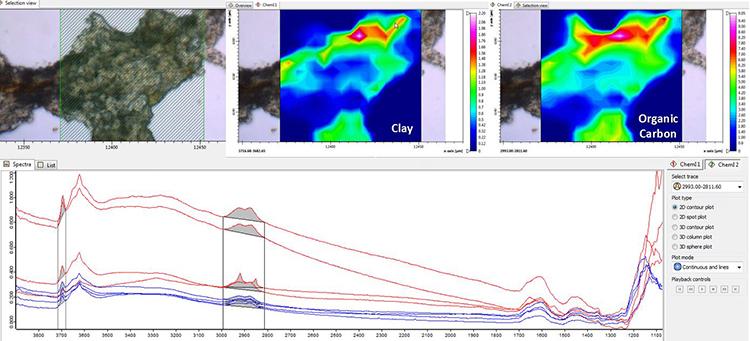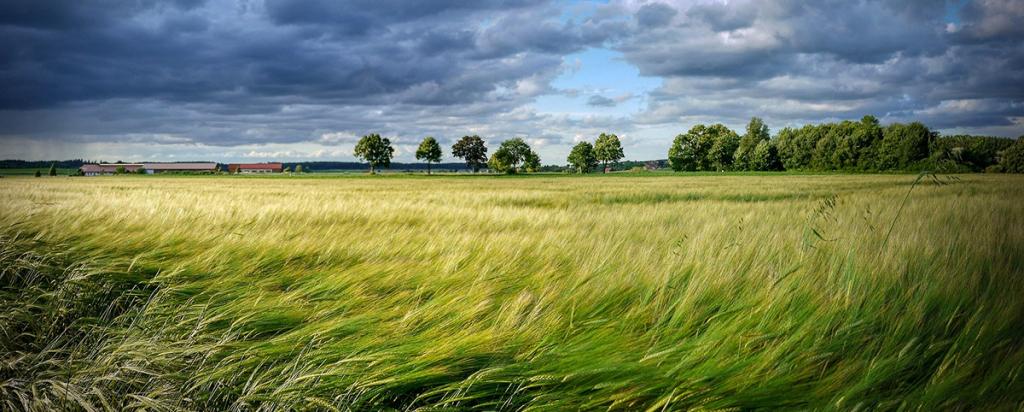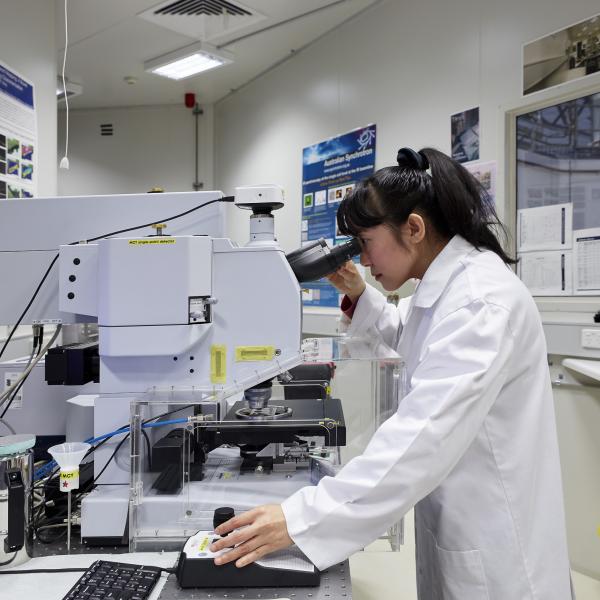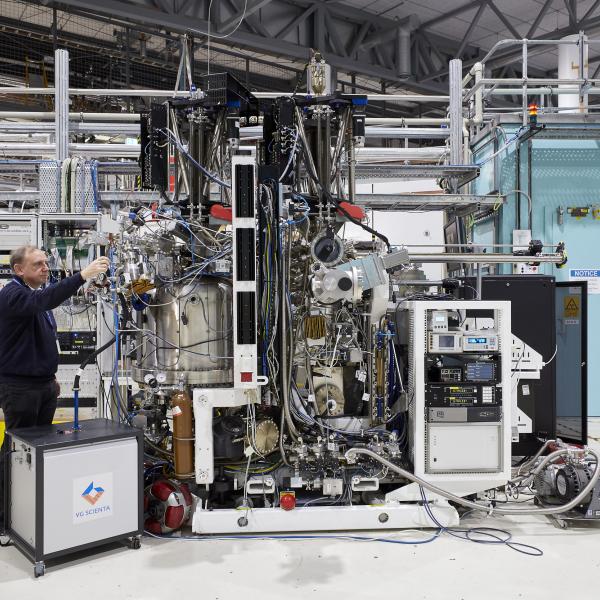

Published on the 30th June 2020 by ANSTO Staff
Key Points
-
Protecting targeted mechanisms in soils can increase the level of organic carbon with benefits for agricultural productivity and climate change mitigation
-
Using diverse samples of crops soils from across Victoria, Dr Han Weng and associates identified the types and re-distribution of carbon after they were exposed to elevated levels of carbon dioxide
-
The soft X-ray and the infrared spectroscopy beamlines at the Australian Synchrotron provided crucial chemical information
Continuing work on widely-cited research published in Nature Climate Change in 2017, Dr Han Weng of La Trobe University and associates are further exploring how the protection of targeted mechanisms in soils can increase the level of organic carbon with benefits for agricultural productivity and climate change mitigation.
Weng is conducting experiments at the Australian Synchrotron this month in what is believed to be the first use of synchrotron infrared techniques to examine the types of carbon and its distribution in Australian soils that have been exposed experimentally to elevated levels of CO2.
Weng is a researcher in the Soil-Plant Interaction group led by Professor Caixian Tang at the Centre for AgriBiocience (AgriBio), La Trobe University.
The rationale behind the research relates to the fact that, according to the Intergovernmental Panel on Climate Change (IPCC), the world is losing two tonnes of carbon per hectare per year in agricultural land.
Land ecosystems take up large amounts of carbon and account for a pool of carbon larger than the atmosphere and vegetation combined.
While working on his PhD, Weng discovered the mechanism that explained how the addition of biochar, a type of stable charcoal-like organic material, improved the retention of carbon in soil in a pastoral system over a decade.
“The biochar acts like a catalyst for carbon sequestration. This helps to build a very fine layer of soil on its surface, which protects new carbon of plants from microbes intent on consuming it,” said Weng.
In order to determine the types of carbon in the soil amended with biochar and the unamended control, the investigators used soft X-ray (SXR) technique at the Australian Synchrotron.
“It allowed us to identify carbon species in the bulk soil,” said Weng.
The soil amended with biochar had lower carbon output to the atmosphere, improved carbon retention within the soil system, mineral protection and storage of new carbon from plants.
“It was not just adding carbon per se, it is building new carbon over time and protecting the soil, making it more fertile,” said Weng.
“When we did some upscale projections, the potential benefits of the approach in terms of carbon retention, were significant.“

A test sample from the infrared spectroscopy beamline taken prior to the experiment
The current synchrotron experiments focus on soils collected from cropped microcosms grown in the Australian Grains Free Air CO2Enrichment (SoilFACE) field facility at Horsham, Victoria, in collaboration with Professor Roger Armstrong of Agriculture Victoria.
The microcosms, which were planted to grain crops grown in intact soil cores collected from major Victorian grain-growing regions, including a Mallee sand, Wimmera cracking clay, and a water-logged prone clay soil from the high rainfall zone, were exposed to elevated levels of CO2pumped in over nine years. The study site is unique in the Southern Hemisphere.
“What happens to carbon species in crop soils is still a huge question mark,” said Weng. “We want to know how different soil types interact with elevated CO2and its impact on nutrition, particularly nitrogen and carbon.”
Research overseas has confirmed that elevated CO2 impacts nitrogen cycling in soil.
“Grain producing soil is usually overworked with a low carbon content. Being overloaded with nutrients, there is a lack of carbon building in the system.”
The first experiments, which took place just prior to the COVID 19 outbreak, began with the use of SXR technique at the Synchrotron to identify the species of carbon in micro-aggregates of agricultural soils.
“Different forms of carbon have different functions,” explained Weng.
“It is also important to know where they are in the soil system.”
“If the carbon is in the fine soil coating, it is better than if it is outside where microbes can consume it,” said Weng.
“One of the most significant advantages of synchrotron infrared micro-spectroscopy (IRM) is that it can provide in situ spatial information of organic carbon speciation in the soil. Traditional wet chemistry studies require processes, which destroy the integrity of the soil.”
He has currently returned to the Synchrotron to use the IRM technique for acquiring chemical maps that revealed the distribution of different organic carbon and clay composition in the intact soil micro-aggregates.
“The synchrotron IR beam essentially offers 100−1000 times higher brightness than the IR light source used in traditional IR instruments. This unique property allows the synchrotron IRM technique to be able to provide spatially-resolved chemical information of materials at micron-scale resolution. The observed “heat” maps reveal the spatial distribution of specific chemical compositions in the analysed sample, such as soil, that can be linked to their functions,” said beamline scientist Dr Pimm Vongsvivut.
“The synchrotron approach provides further insight into the chemical information of soils at the micrometer scales, which we can then test and extrapolate on to a larger scale,” added Weng.
“We have already reached just over 400 parts per million (ppm) of atmospheric carbon dioxide, well on way to reaching 550 ppm, which was projected for 2050.”
“Optimised land practices and conservation will be essential for the Australian environment and the economy. Best practice could potentially restore 100 million tonnes of carbon in soil and help Australia meet its Paris Agreement target.”
By providing insights that offer a better understanding of sustainable limits for productive use of soil, we are helping address one of Australia’s science and research priorities.
Moving forward, Weng will collaborate with the Grains Research and Development Corporation (GRDC), The University of Queensland, The University of South Australia and Murdoch University and Australian Synchrotron, all developing synchrotron-based techniques to improve our understanding of soil-plant interactions in Australian grain-producing systems.
This project is funded by La Trobe University’s Research Focus Area in Securing Food, Water and the Environment (SFWE RFA 2000004295) and Australian Synchrotron (AS1/SXR/15754 & AS1/IRM/15940a).





